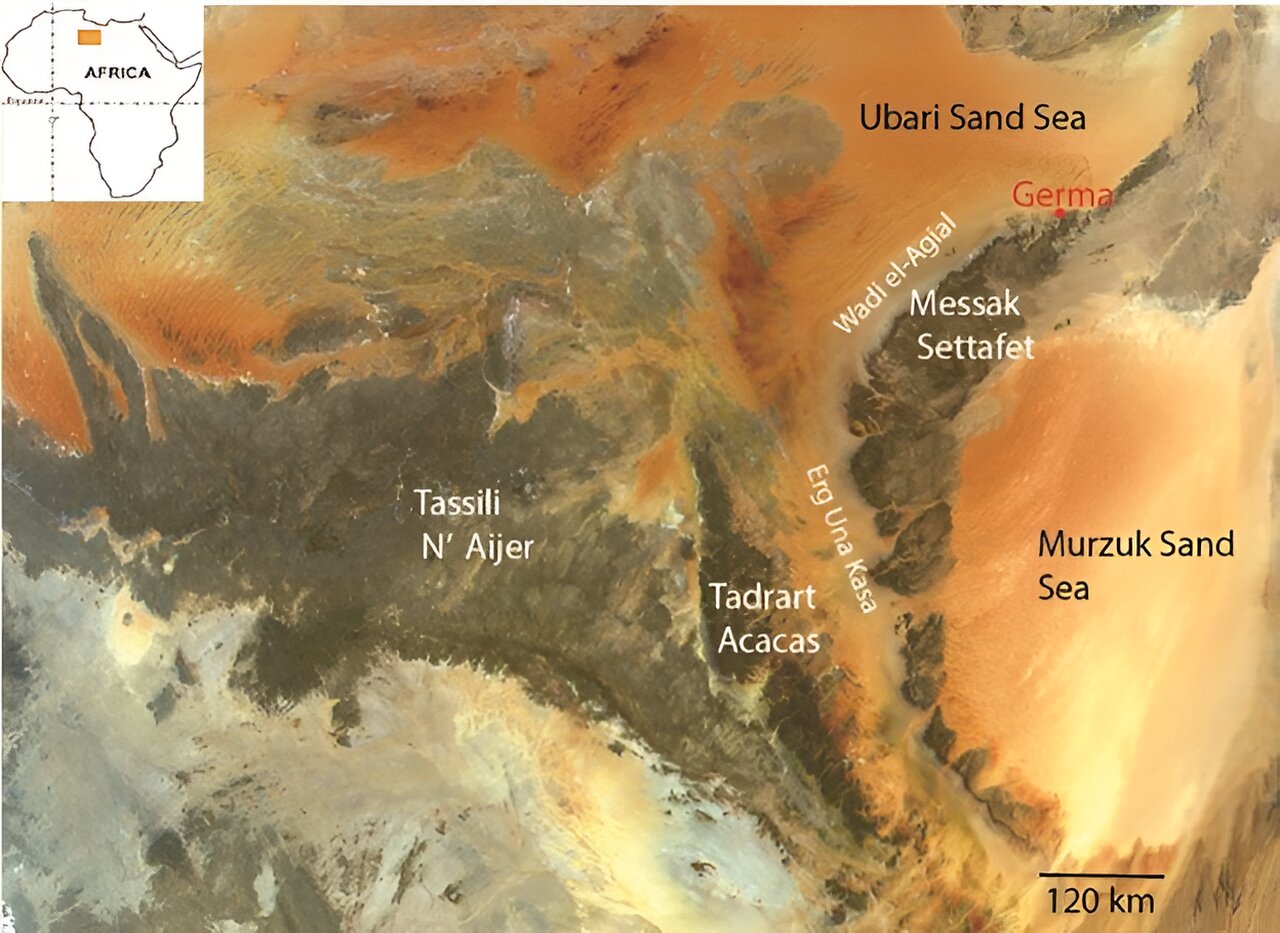With its low quantities of rain and soaring high temperatures, the Sahara Desert is often regarded as one of the most extreme and least habitable environments on Earth. While the Sahara was periodically much greener in the distant past, an ancient society living in a climate very similar to today’s found a way to harvest water in the seemingly dry Sahara—thriving until the water ran out.
New research that will be presented Monday, 16 Oct., at the Geological Society of America’s GSA Connects 2023 meeting describes how a series of serendipitous environmental factors allowed an ancient Saharan civilization, the Garamantian Empire, to extract groundwater hidden in the subsurface, sustaining the society for nearly a millennia until the water was depleted.
“Societies rise and fall at the pleasure of the physical system, such that there are special features that let humanity grow up there,” says Frank Schwartz, professor in the School of Earth Sciences at The Ohio State University and lead author of the research study.
Monsoon rains had transformed the Sahara into a comparatively lush environment between 11,000 and 5,000 years ago, providing surface water resources and habitable environments for civilizations to thrive. When the monsoon rains stopped 5,000 years ago, the Sahara turned back into a desert, and civilizations retreated from the area—aside from an unusual outlier.
The Garamantes lived in the southwestern Libyan desert from 400 BCE to 400 CE under nearly the same hyper-arid conditions that exist there today and were the first urbanized society to become established in a desert that lacked a continuously flowing river. The surface water lakes and rivers of the “Green Sahara” times were long gone by the time the Garamantes arrived, but there was luckily water stored underground in a large sandstone aquifer—potentially one of the largest aquifers in the world, according to Schwartz.
2023-10-14 14:24:04
Link from phys.org
